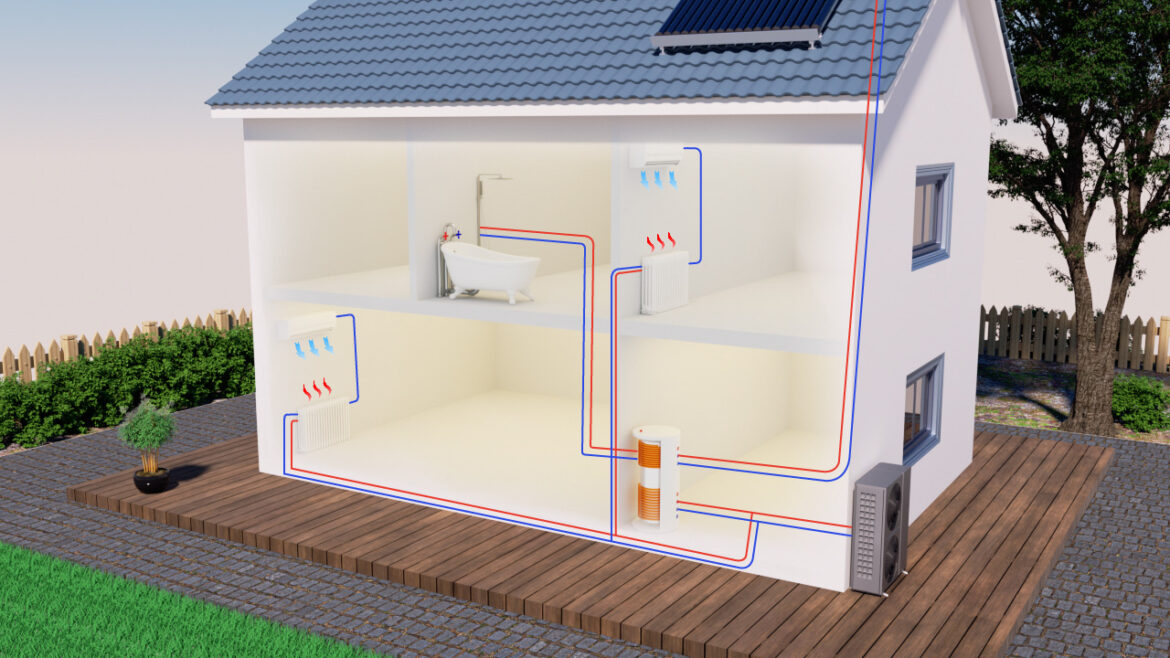Air source heat pumps (ASHPs) have been gaining popularity as an efficient and cost-effective way to heat homes and buildings. However, they have some limitations, particularly in cold climates where their efficiency can drop, making them less economical to run. That’s where solar thermal collectors come in. By combining these two technologies, you can create a powerful heating system that’s efficient, sustainable, and cost-effective. In this article, we’ll explore six aspects of this winning combination.
What is an Air Source Heat Pump?
An air source heat pump is a device that uses the outdoor air as a heat source to provide space heating and hot water in buildings. It works by absorbing heat from the air outside and transferring it into the building through a heat exchanger. ASHPs can work in temperatures as low as -15°C, but their efficiency decreases as the temperature drops. They are a popular alternative to traditional heating systems as they are more energy-efficient, eco-friendly, and can help reduce heating bills.
What are Solar Thermal Collectors?
Solar thermal collectors are devices that capture the sun’s energy to heat water or air. They are typically installed on the roof or the ground and come in different designs, such as flat plate collectors or evacuated tube collectors. The energy from the sun is absorbed by the collector’s surface and transferred to a heat transfer fluid that circulates through pipes to a storage tank. Solar thermal collectors can provide hot water or space heating and can be used in any climate, as long as there is enough sunlight.
How do Air Source Heat Pumps and Solar Thermal Collectors Work Together?
Combining ASHPs and solar thermal collectors can be a smart way to maximize energy efficiency and reduce carbon emissions. In a typical installation, the ASHP will be the primary source of heating, providing warmth to the building. However, when the outside temperature drops, the ASHP’s efficiency can decrease, and that’s where the solar thermal collectors come in. The solar thermal collectors can preheat the water that the ASHP uses, reducing the amount of work the ASHP needs to do, and increasing its efficiency. In this way, the solar thermal collectors act as a supplement to the ASHP, allowing it to work more efficiently and cost-effectively.
What are the Benefits of Combining Air Source Heat Pumps and Solar Thermal Collectors?
There are several benefits to combining ASHPs and solar thermal collectors. Firstly, it reduces the workload of the ASHP, which increases its efficiency and extends its lifespan. Secondly, it reduces carbon emissions and helps homeowners or building owners to reduce their environmental impact. Thirdly, it reduces energy bills as the ASHP doesn’t have to work as hard to provide heat, saving homeowners or building owners money in the long run. Finally, it provides a more reliable source of heating, as the solar thermal collectors can provide heat even when the ASHP’s efficiency drops due to low outdoor temperatures.
What are the Costs of Combining Air Source Heat Pumps and Solar Thermal Collectors?
The cost of combining ASHPs and solar thermal collectors can vary depending on the size of the building, the type of system installed, and the local climate. The initial installation costs can be higher than installing an ASHP or solar thermal collectors on their own. However, the long-term savings on energy bills and the reduction in carbon emissions can offset these costs over time. Moreover, some countries offer financial incentives, such as grants or tax credits, to encourage the installation of renewable energy systems.
Conclusion
Combining air source heat pumps and solar thermal collectors is a smart way to maximize energy efficiency and reduce carbon emissions. By supplementing the ASHP with solar
